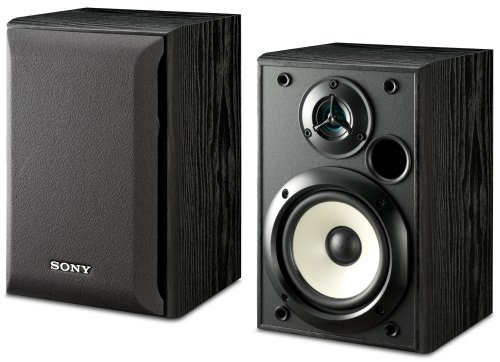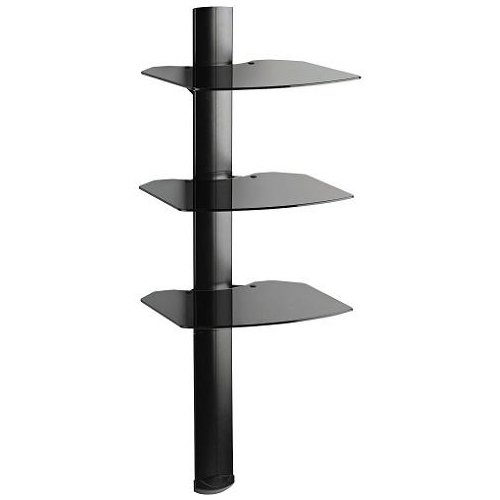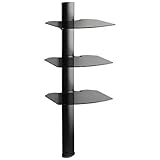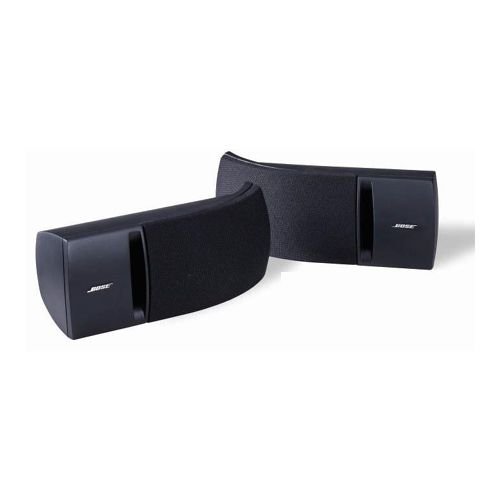Although many car audio enthusiasts already have a good understanding of how sound is produced, no technical manual should start without covering the basics of its subject matter. Writers sometimes wrongly assume that the reader will already know quite a lot about the subject and so they skip the basics. Because of this, some may find it difficult to understand the reasons for installing speakers in particular positions in the car, for example, or why a woofer operates best in a particular size and type of enclosure. Most people find it embarrassing to admit that they do not understand something which they assume everybody else knows. The truth is that there are probably several other people in the same group who would like to ask the same question.
Here I will outline the basics of the subject and briefly discuss how these basics apply to the world of car audio. It is not supposed to be a complete guide to sound because we don't want to send you to sleep! If you would like to know more about sound and the principles of hi-fi sound reproduction, there are many good books on the subject.
So what is sound?
Sound is caused by the movement of air. If a large wooden panel is vibrating, the air next to it is pushed away. If the vibration is slow then the air just moves out of the way, but as the rate of vibration increases to between a few tens and a few tens of thousands of excursions per second, the air cannot move out of the way fast enough and therefore compresses as the panel pushes it away. The air's natural elasticity comes into play. The particles of air against the panel are pushed against the next particles, which push against the next ones and so on, creating a 'pressure wave'. As the panel returns to its starting position, the air becomes less dense as it fills the void in front of the panel.
The rate at which 'pressure waves' are produced is called the 'frequency' and is measured in 'cycles per second'. Instead of 'cycles per second' we usually describe frequency in terms of Hertz (1 cps = 1 Hz). Imagine a bath full of water. If you put your hand in the water and move it slowly backwards and forwards, not much happens - the water simply slips around the sides of your hand. But if you move your hand very fast, the water doesn't have time to move out of the way and you create a wave in the bath. Soon the water is flowing over the edges of the bath and soaking the carpet. If you used something larger than your hand to move the water, such as a dinner plate, you could cause the water to overflow without moving your hand as fast as before. Air reacts in much the same way. Big objects and small objects can generate pressure waves and therefore sound, but a small object must move quicker to cause the air in front of it (and behind it) to be compressed.
You are probably one step ahead of me by now, but this is why we find tiny tweeters and very large woofers. All sizes of speakers can produce sound, and the reasons why tweeters are small and woofers are big has much to do with the size of the pressure wave they are trying to reproduce and the weight and characteristics of the moving 'panel' - which in the case of a speaker is usually a cone, a dome or occasionally a flat diaphragm. To reproduce high frequencies, the cone or dome needs to move very fast. The smaller and lighter it is, the easier it is for the amplifier to control it. We'll come back to this later. First we need to understand a little more about sound itself.
Pressure Waves
Pressure waves of a sound travel at a fixed speed of around 1100 feet per second (actually, air temperature affects the exact speed but we don't need to worry too much about that). If we know the frequency (the number of waves per second), we can calculate the distance between corresponding points on successive waves - in other words, we can measure the length of a wave, or the 'wavelength'. A sound that has a frequency of 1100Hz has a wavelength of one foot. A sound of 2200Hz will have a wavelength of six inches, and a sound with a frequency of 550Hz will have a wavelength of two feet.
The notes of the musical scale simply represent sounds at certain frequencies. Middle A on a piano is 440Hz for example (a wavelength of 2ft 6in). In the case of a church pipe organ or electronic synthesiser, it may be possible to play an A which is four octaves below middle A. This has a very low main or 'fundamental' frequency (additional frequencies or 'harmonics' will be added naturally, which gives each instrument its own individual tonal character) of 27.5Hz, a wavelength of around 40 feet! At literally the other end of the scale, an A played three octaves above middle A has a frequency of around 3500Hz and a wavelength of just 3.75 inches.
The size of the musical instrument (and loudspeaker) tends to suggest the size of the wavelength it's designed to produce. The soundboard of a piano and the large pipes of a church organ are capable of producing large wavelengths, which means lower frequencies. Similarly, a 12-inch diameter subwoofer is designed to give low bass. If we ignore for a moment the mechanical limitations, there is nothing to stop a good 6 inch mid-woofer from reproducing very low frequencies. It can move at the required cycles per second, but its size means that it can only displace a certain amount of air during each cycle. It may produce very low frequencies, but only at very low output levels. This takes us back to the analogy of the hand and the dinner plate in the bath full of water. The surface area of a 12-inch subwoofer is like a dinner plate, able to move enough air in one cycle to produce a pressure wave capable of rattling the windows in the house across the road!
Imaging and Phase... creating the illusion of reality
When we install a hi-fi system in the home or in the car, we are attempting to reproduce a very complex pattern of sound waves within an environment that is quite different to the one in which the instruments and vocals were recorded. We are trying to recreate not only the sounds of the various instruments and singers accurately but also their positions on the 'sound stage'. This is often called 'imaging' or 'stage image'. It may also be described as 'staging', but in car audio this word is generally used to describe the position of the stage itself (whether it appears to be in front of the listeners or behind them), rather than the position of the performers on the stage.
If we listened to and recorded the sound of a single flute in our living room, for example, and then replayed it via a single full-range speaker positioned in exactly the same place as the flautist, there is a good chance (if the recording equipment and hi-fi system is of a good enough quality) that it will sound more or less identical. The reverberation characteristics of the room will be the same and, since we are using only one speaker instead of trying to artificially recreate the position of the flautist in the room by using stereo techniques, the instrument should appear to be in exactly the right place.
If we had a complete orchestra in our living room and wanted to copy what we did with the single flute, we would need to use a multi-channel recorder, several channels of amplification and however many speakers it took, each arranged in exactly the right place for each instrument. Having witnessed this done at a hi-fi show in Paris some years ago, I can tell you that it can sound very realistic. The problem is that it is not currently feasible to do this in most homes, and certainly not in a car, which is why we have... yep, good old stereo.
Stereo aims to recreate the exact positions of the various instruments by using only a single pair of loudspeakers, and it achieves this mostly by increasing the level of a particular instrument in one of the channels relative to the other channel. Only the levels are different - the wavelengths from both the left and right channels will be identical in every other way. They are said to be 'in phase'. This means that if you could somehow freeze the sound and see the wavelengths emanating from the two speakers, both wavelengths would be at the same point in their cycle.
When sound is recorded for stereo reproduction, it is assumed that the listener will be positioned equidistant between the two loudspeakers. Of course this is rarely the case in a car, unless you happen to drive a McLaren F1. We compensate for not being seated central to the loudspeakers by adjusting the balance control on the CD player, which increases the volume level on one side relative to the other. This only corrects the stereo image up to a point, because we are still physically closer to one speaker than the other, and adjusting the balance control has no effect over the phase and timing of the signal reaching our ears.
If we are sitting in the front of the car, close to the left-side speaker, then we will hear the sound from that speaker very slightly earlier than the sound from the speaker on the right, and from those speakers behind us. It is also likely that in the upper frequencies, where the wavelengths are very short, the sound we hear through our left and right ears may be slightly 'out of phase'. These timing and phase distortions confuse the brain and can destroy the stereo effect. When this happens, you hear most of the sound is coming from the speaker closest to you, instead of from an imaginary stage across the windscreen - the stereo trick fails to work.
Our earlier analogy with water may also help us to understand what is meant by sound being 'in phase' and 'out of phase'. Imagine that you start a gentle wave from one end of the bath. If you use both hands to start two waves at exactly the same time, the peaks of the waves will occur at exactly the same point and the waves could be said to be 'in phase'. Now start a gentle wave from the other end of the bath. What happens when the two waves meet? Both waves clash and effectively cancel each other out. Now imagine speakers at the front and rear of a vehicle, each producing sound pressure waves. These mix and create some very complex alterations to the sound. As the pressure waves meet, the air may be pushed stronger in the same direction in which it was already travelling (so we get additions which can lead to peaks in the frequency response), or one pressure wave may compress against another travelling in the opposite direction. In the latter case, if the two waves are identical in terms of frequency and pressure and are exactly half a wavelength out of phase, they will cancel themselves out completely, leaving silence.
Usually the two sound patterns are so complex that they will only partially cancel, but relatively pure tones of long wavelengths and high pressure are more likely to noticeably cancel. The lower the frequencies being produced and the more loudspeakers there are reproducing that range of frequencies, the more likely it is that phase cancellation will occur. If speakers are wired with the + and - terminals reversed on one speaker, the speakers are placed 180 degrees (half a wavelength) 'out of phase'. In theory they should cancel themselves out, but in practice the bass region suffers most cancellation and the remainder of the sound becomes confused, with little or no central image.
Speaker placement... for those without a McLaren F1
By installing many speakers inside a vehicle, we create a very complex mix of pressure waves which can cause problems with the overall sound. This does not necessarily mean that it is a bad thing to install a large number of speakers. We may want to split the frequency range into small portions - sub-bass, bass, mid-bass, midrange, upper midrange, high frequencies and ultra-high frequencies - so that each range has a pair of speakers dedicated to it. Because of the limitations of loudspeakers, this might be a good idea if we are looking for absolute sonic fidelity. Of course space in a vehicle is limited and so we tend to install fewer speakers, usually covering the sub-bass, mid-bass, midrange and upper frequencies. This can give good reproduction of the tonal qualities of the various instruments and voices but there are still the problems of phase, 'time alignment' and 'off-axis' performance to consider.
We should generally try to avoid reproducing the same frequencies from speakers positioned at different distances from the listeners. For example, if we have a pair of 6-inch speakers producing mid-bass at the front of the vehicle, we should avoid having another pair of speakers reproducing exactly the same range of frequencies from the rear shelf. The colliding pressure waves will cause additions and subtractions, according to the phase of each wave, at the point where they meet. Frequency peaks and troughs could be adjusted with a third-octave equaliser, and the timing of the sound from each speaker could be adjusted using a 'time alignment' digital signal processor, but there is no practical way of compensating for the phase distortions. It is much more sensible to avoid the problems from the start, as much as possible.
When deciding where to position speakers, especially midrange and tweeters, try to install them so that the left and right speakers of each matched pair are equidistant from the listeners. This is often very difficult to achieve of course, but do the best you can. The footwell positions often work well for midrange speakers and sometimes tweeters too. If you decide to mount the tweeters higher, try if possible to mount them in a position which is half the distance to the midrange speaker - there is some evidence to suggest that placing the mids and tweeters exactly 180 degrees apart can improve stereo imaging.
Larger bass speakers can often be installed in the doors without too much affect on imaging, if you make sure that the crossover point is set so that their output does not overlap the frequency range of the midrange speakers too much. The subwoofer, or subwoofers, usually have to be installed in the rear of the vehicle because of their size. Take care when choosing the slope and setting the crossover point on the channel(s) feeding these speakers. With a 6dB per octave 'low-pass' filter (a filter which only passes frequencies below a certain 'crossover point') set to 100Hz, the output at 200Hz will only be 6dB lower, and since subwoofers tend to be driven loud, the pressure waves created in the middle frequency region will probably be strong enough to interact with the speakers at the front of the vehicle. It is generally wise to choose a 12dB or 18dB slope for subwoofers.
Installing full-range speakers in the rear shelf, or in the rear doors, often confuses the stereo image at the front of the car because the same sounds are coming from more than one source and this is unnatural. If you need to install speakers here to provide 'rear ambience' or a 'double front stage' because you often carry passengers in the rear seats, adjust the front/rear fader control on the CD player so that the front speakers are considerably louder than the rear speakers when listening from the driver's seat.
You may still find that the stereo imaging at the front of the car is confused. If this is the case, it is worth experimenting by reversing the +/- connections to all the full-range speakers at the rear, putting them 180 degrees 'out of phase' with those in the front. It may sound crazy but sometimes works well. Always ensure that you reverse the connections on both speakers in a pair.
In an ideal situation, all the sound at all the various frequencies should start out from exactly the same place. A speaker system which attempts to provide this is often described as a 'single point source' because the various drive units are physically aligned so that, in theory at least, the sound will be 'in phase' and 'time aligned' across the entire frequency spectrum. What usually occurs in a vehicle, however, is that speakers are positioned some way apart and at different angles relative to the driver and passengers. A speaker that is pointed directly at the listener is said to be 'on axis', while a speaker installed low down in the door next to the driver is described as being 'off-axis'. A speaker's output characteristics alter when it is listened to 'off axis'. Its frequency response is affected, and phase changes may also occur. It is important to know this and experiment, where possible, by altering the mounting angle of the speaker to achieve the best results.
Shake, Rattle and... Why materials resonate
One thing we want to avoid in a car audio system is any panels (such as the metal panels of the vehicle itself) that resonate, that is, vibrate because of the movement of air within the enclosed space of a car. It's a bad thing because these panels will produce a sound of their own or, in the case of the walls of a bass enclosure, if they're not rigid then we'll lose some of the power and definition from the low frequencies.
Musical instruments which produce sound naturally (not electronically) do so by either causing something to resonate - such as guitar and piano strings or the skins and metallic surfaces of a drum kit etc. - or by directly moving the air, as in the case of wind and brass instruments. Every material has a particular 'resonant frequency' - this is the frequency at which the material will vibrate or resonate most freely - and this, together with the size of the resonating object and many other factors, contributes to the sound which an object will produce if it is sufficiently excited.
Of course something very dense and rigid like a brick is less likely to be made to resonate than a guitar string or a thin piece of wood. Brick is a much less efficient resonator than wood. Sometimes this can be useful, especially when building a bass enclosure where we need the sides to be very rigid and acoustically 'dead' so that it doesn't resonate, since this would add some of its own sonic character (or 'coloration') to the bass sound we are trying to reproduce.
Unfortunately, brick-built bass cabinets in cars haven't really caught on, and more practical alternatives had to be developed for making wooden enclosures and the metal parts of the car less resonant. Good quality particle board (MDF) is especially dense and provides a good starting point, and this can be treated, if necessary, with sound deadening sheet or a spray treatment. In the case of sound deadening sheet, this bonds an acoustically 'dead' material to the more easily excited panel, such as the vehicle's metal inner side panel, door panel or inner boot (trunk). The sheet helps to absorb panel resonance because its own resonant frequency is very low, so the resonance occurs at a much lower frequency and becomes less noticeable. In the case of NoiseKiller, a spray treatment developed by Swedish company Audioform, the resonance absorbed by the material is not simply frequency shifted. Instead, it is transformed into a tiny amount of heat. The manufacturer claims that the material produces absolutely no sound of its own - in other words, the panel resonance is completely eliminated.









